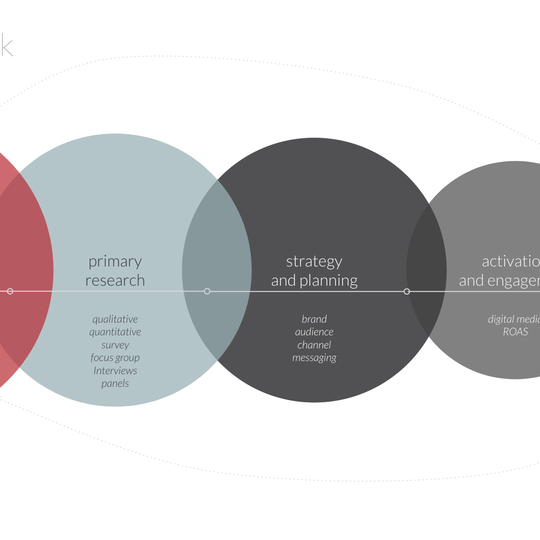
The Changing Landscape of Marketing
The landscape of marketing has experienced seismic shifts in the last decade. [B]RIGHT Brand Performance Group will help you understand what has changed and how to turn those challenges into opportunities.
Secondary research refers to the use of existing data, studies, and other sources of information that have been gathered and analyzed by others, in order to support decision-making and problem-solving in a business context. This type of research is typically used as a starting point to gather background information on a topic, and can be a cost-effective and time-efficient way to obtain data compared to primary research, which involves collecting data directly from consumers through surveys, focus groups, and other methods.
To gather insights and information from existing sources to lay a data-informed, quick foundation for additional research or exploratory data analysis.
Conducting data analysis and secondary research, allows brands to gather actionable, proven, and fast-data insights into how to approach a business, vertical, brand positioning, market, or an audience challenge or opportunity.
Analyzing reports and data published by market research firms to gain insights into consumer behavior, market trends, and other important factors. Market research reports can be useful for identifying opportunities and trends in a particular industry.
Use cases:
Analyzing social media data to gain insights into user behavior, preferences, channel usage, sentiment, cadence, frequencies, content mix, and more to inform channel and brand expression strategy. These audits can be useful when revising, refining or launching new social media initiatives or channels.
Use cases:
Analyzing previous research and reports to understand how a particular problem or issue has been addressed in the past. Case studies can provide insights into best practices and can be used to inform current research.
Use cases:
Analyzing large sets of data to identify patterns and trends. Data mining can be used to gain insights into consumer behavior, market trends, and other important factors..
Use cases:

There are several compelling reasons why brands should use secondary research as part of their marketing strategy:
Secondary research is often significantly less expensive than primary research, as the data has already been gathered and analyzed, eliminating the need for the brand to spend resources and time on data collection.
Secondary research allows brands to quickly gather and analyze large amounts of data in a relatively short period of time, enabling them to make informed decisions quickly.
Secondary research is based on existing data and studies, which have typically been subject to rigorous scientific scrutiny and are therefore more reliable than data collected through primary research methods.
Secondary research provides a broader perspective on a given market, as it often includes data from a variety of sources and time periods, allowing brands to gain a more comprehensive understanding of their target audience.
By using secondary research to gain insights into their target audience and market trends, brands can develop a competitive advantage by being better informed and better equipped to make informed decisions about their marketing strategy.
In conclusion, secondary research is an essential tool for brands looking to make informed decisions about their marketing strategy. By being cost-effective, time-efficient, and providing reliable data and a wider perspective, brands can gain a competitive advantage and stay ahead of the curve in their market.

The landscape of marketing has experienced seismic shifts in the last decade. [B]RIGHT Brand Performance Group will help you understand what has changed and how to turn those challenges into opportunities.

[B]RIGHT’s marketing research strategy is founded in identifying opportunities for whatever problems your brand needs solved. We implement the research strategy you need, with a focus on simplifying your data strategy.

Data analytics and statistical modeling for marketers, agencies and brands that want to be more data-driven, efficient and effective.